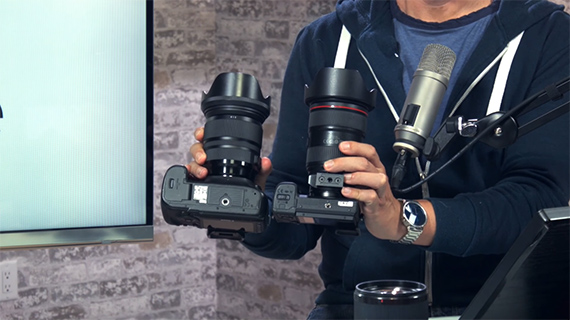Before you get into the whole business of adapting lenses, you need to understand why it’s done. Proprietary camera systems force you to buy lenses that are designed for that system for perpetuity. There may be great optics available on a different system, but you cannot use them unless you migrate to that other system—or use an adapter. Adapters act as bridges between two otherwise incompatible systems:
Adapters alter the flange distance of the camera, making it possible for the adapted lens to focus pretty much the same way as it would normally do on a proprietary camera body. The flange distance is the distance between the lens and the sensor.
In the image below you can see the comparative flange distances for a standard mirrorless camera (on the right) and a DSLR (on the left).

Flange Distance
The mirrorless camera has a DSLR lens mounted on to it with the help of an adapter. This one pulls the lens away, making up for the difference in flange distance.
As Tony Northrup explains, some adapters are capable of transferring information back and forth between the lens and the camera body. This allows lenses to be auto-focused and even image stabilization to be used pretty much the same way.
Not all lenses can be adapted quite the same way on all camera bodies. This chart further demonstrates which lens systems can be adapted on which camera bodies.

Camera body / lens system adaptability
These are some of the highlights from the video:
- An adapter alters the flange distance along with blocking light seepage when you mount an incompatible lens to a camera body.
- Nikon lenses can be mounted on Canon systems, but with a lot of handicap. Mounting Canon lenses on Nikon bodies is much more difficult.
- Pentax cameras cannot really accept Nikon and Canon lenses. But its lenses can be mounted on Nikon and Canon systems.
- Sony E mount cameras are the best option for mounting non-proprietary lenses.
- Intelligent adapters allow communication between the lens and the camera body.
- Even with the best of smart adapters, auto-focusing is only about 80–85 percent reliable.
- When you put in a big lenses on smaller sensors, crop factor comes into effect. For example, a 50mm lens will become a 75mm on an APS-C camera like the Sony a6300.
- Speed boosters are available that can take an image produced by a large sensor lens and focus it down to the size of a smaller sensor. They tend to work the opposite to what tele-converters do.
Do you have any other advice or insight for photographers new to adapting lenses?
Like This Article?
Don't Miss The Next One!
Join over 100,000 photographers of all experience levels who receive our free photography tips and articles to stay current:






Leave a Reply